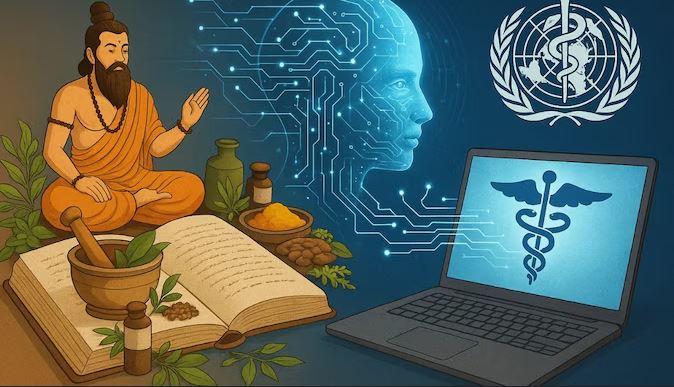Manuscriptology in Ayurveda: A Scientific Approach to Preserving Ancient Medical Knowledge
DOI:
https://doi.org/10.21760/jaims.10.6.46Keywords:
Ayurveda, Manuscriptology, Classical texts, Conservation, Traditional medicine, PhilologyAbstract
Ayurveda, one of the world’s oldest systems of medicine, has been preserved through a rich corpus of manuscripts written on palm leaves, birch bark, and handmade paper in various scripts. Manuscriptology, the scientific study of these manuscripts, is essential to preserving and understanding traditional Ayurvedic knowledge. This article explores the interdisciplinary methodology of Ayurvedic Manuscriptology including collection, preservation, editing, translation, and interpretation and discusses its outcomes, significance, and future directions. Through careful manuscriptological work, ancient wisdom can be made relevant and applicable to modern healthcare systems.
Downloads
References
Sharma RK. Ayurveda ka Vaigyanik Itihaas (Scientific History of Ayurveda). Varanasi: Chaukhambha Orientalia; 2012.
Rao VB. Introduction to Manuscriptology. Chennai: Institute of Asian Studies; 2005.
NAMAMI. National Mission for Manuscripts: Guidelines for Manuscript Conservation Centres [Internet]. Ministry of Culture, Government of India; 2020 [cited 2025 Jul 18]. Available from: www.namami.gov.in
Deshpande V. Preservation of Manuscripts in India: Problems and Prospects. New Delhi: Indian Council of Historical Research; 2003.
Gaur RC. Preservation and Conservation of Library Materials. New Delhi: Directorate of Book Production, IGNOU; 1992.
Rastogi S. Rediscovery of Basavarajeeyam: A classical treatise of Ayurveda. J Ayurveda Integr Med. 2015;6(1):70–3.
Tilak Maharashtra Vidyapeeth. Postgraduate Curriculum for Ayurveda Manuscriptology and Samhita Studies. Pune: Department of Sanskrit and Samhita; 2019.















